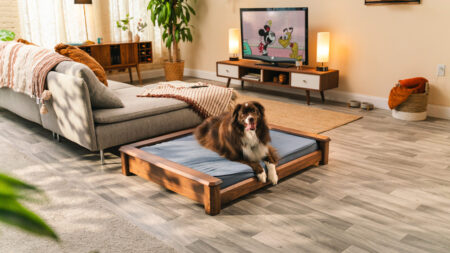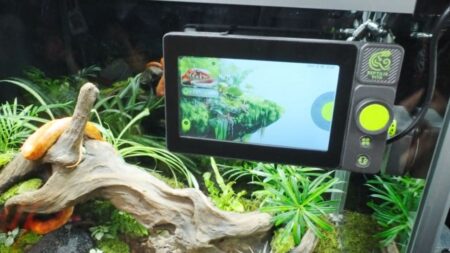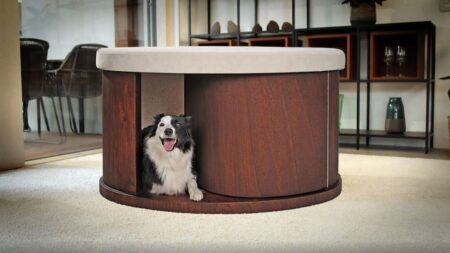Leaving your dog home alone is enough to make any pet parent feel uneasy. Will they be okay? Will they get bored or anxious? These valid questions can almost make you not want to leave your pets behind. But there is no reason for you to cancel your plans over this fear. With a bit of preparation, you can create a positive and safe living environment for your dog while you are away and give yourself peace of mind. Here is a quick guide that will get you familiarized with the needs of a pup home alone for short periods.
Training to Stay Alone
Studies have found that slowly getting your dog used to being alone can prevent problems later on. You have to teach your dog that being alone is fun and reward him for being relaxed when he behaves right in the situation. The process of training your dog to stay happy alone is long and may take time, but it can help make the pup self-reliant and not crave for company in short periods so you can get your tasks outside the house done without having to worry about the pet.
Create A Safe Space

The first need of any dog is a comfortable and secure space where he can relax while you are away: this could be a crate, a designated room, or a doghouse. Your dog’s safe space should be chosen per his specific needs and preferences. Find a quiet spot away from noisy distractions. Provide easy access and sufficient space for your dog. Line the doghouse with familiar bedding to create a calming atmosphere. This setup helps reduce anxiety and keeps your dog calm while you are away.
Maintain Comfortable Environment
Just like you, dogs can’t handle harsh sunlight or extreme cold. If you want your pup to stay energetic all day long, you must maintain a comfortable temperature in his home. Adequate lighting is also crucial. Go for natural lighting. But if this isn’t possible, use properly adjusted artificial lighting fixtures that aren’t too bright or too dim.
Leave Stimulating Toys

Don’t forget about entertainment and mental wellness of your dog. Leave behind interactive toys or puzzles that can challenge your dog mentally and keep him occupied while you are away. Food-dispensing toys are also a great way to keep those clever minds busy and prevent boredom. Toys can be helpful for your dog to spend time alone.
Also Read: 15 Architectural Doghouses That’ll Put Your Home to Shame
Remove Potential Hazards
Leaving a dog alone at home can expose him to potential hazards. You must pet-proof your home by tucking away electrical cords, valuables, and anything your dog might chew on or ingest. Keep the toxic plants and chemicals out of reach as well. Secure trashcans and close toilet lids, too, to prevent unwanted exploration.
Provide Sufficient Water And Food
Always leave accessible freshwater and proper food portions for your dog. You can use automatic feeders to dispense food if you are out for a long time. This ensures they eat only the amount they need without overeating. By setting up for their basic needs, you help lower their stress and keep them satisfied until you return.
Ensure Regular Exercise Before Leaving
A good walk or play session before you leave can reduce your dog’s anxiety and enhance energy levels. These can help the pet relax and settle down for the period they will be alone. Exercise, aside from the benefits of physical activity, also gives them a routine that prepares them for quieter times ahead. Ensuring they’re satisfied with the activity also minimizes the chance of destructive behavior.
Consider Dog Camera

Invest in a dog camera to keep an eye on your pet and house in your absence. These devices allow you to monitor your pet remotely via smartphone or computer. These devices can help you monitor your dog for any ‘hidden’ signs of distress, such as trembling, pacing about, or whining. Some dog cameras may even let you communicate with them or dispense treats; this not only helps you keep an eye on your dog’s safety but also lets you interact and soothe them if they seem anxious or restless.
Hire Pet Sitter Or Use Doggy Daycare
If you’re going to be leaving your dog home alone for longer periods of time during the day, you have two options: pet sitters and doggy daycare. The best choice depends on your dog’s personality and needs. Say your dog prefers the comfort and familiarity of their own home or gets anxious in new environments; a pet sitter can be the perfect solution. They can offer personalized care in your home, providing companionship, walks, and playtime, reducing your pet’s feelings of stress and loneliness.
Meanwhile, if your dog is a social butterfly who thrives on interaction and exercise, they will likely flourish in a doggy daycare. A dog day care center in your city can provide a stimulating and interactive environment where your pup can play with other dogs, burn off energy, and receive supervision throughout the day.
Ensure Proper Identification
Invest in a well-fitting, comfortable collar made from good quality materials and make sure it is secure with a sturdy buckle or clasp. Attach clear, legible ID tags that include your name and contact information, making it easier for someone to reach you. You can also consider GPS dog collars that allow you to track your dog’s location using a smartphone app or web interface. This can be a lifesaver if your dog somehow gets out of the house or gets lost.
Practice Safety Drills
According to a study by the National Fire Protection Association, nearly 1,000 house fires each year are accidentally started by the homeowners’ pets. You can prevent these accidents simply by ensuring to don’t keep any fire related equipment in the reach of your pet.
For pet fire safety, consider using monitored smoke detectors connected to a monitoring center so emergency responders can be contacted when you are not home. Furthermore, training your dog to respond to safety cues is crucial for emergencies. Teach them commands like “stay” or “go to your place,” which can be lifesaving in dangerous situations.
Wrapping Up
Tailor these tips to your dog’s individual needs and personality. By following these points, you can create a safe and comfortable environment for your furry friend while you are away, ensuring a happy reunion upon your return.
And remember, a happy and stimulated pup is less likely to engage in destructive behavior. Don’t forget to leave them with lots of love and cuddles before you head out!
Follow Homecrux on Google News!




